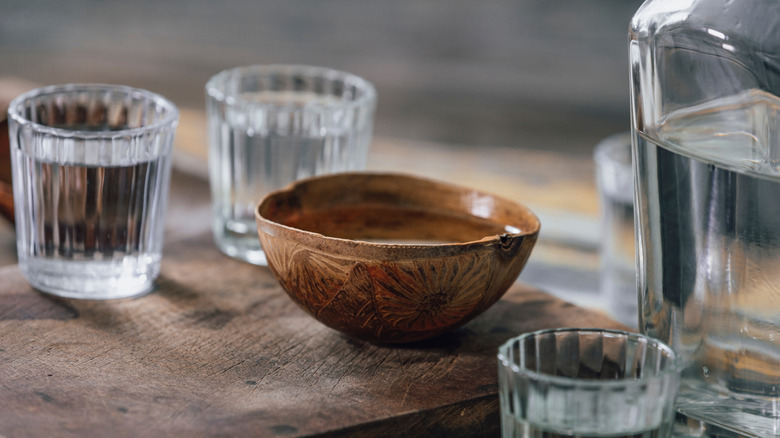The Native Mexican Drink That Was Banned For 50 Years
With the immense and only growing popularity of Mexican spirits like tequila and mezcal, many imbibers have had their interest in the country's alcoholic beverages piqued. Not only are both of those options delicious on their own and versatile for some of the best modern classic cocktails, but they also have deep cultural roots, important histories, and characteristics that tell stories of the regions where they're made. So, it's a worthwhile endeavor to get to know Mexican spirits beyond tequila and mezcal, like bacanora, another agave spirit, a little like tequila, a little like mezcal. Then there's sotol, a lesser-known Mexican spirit especially intriguing for a few reasons. First and foremost, it's tasty, with flavors ranging from piney, earthy, or fruity to spicy or floral. Secondly, it's actually not made from agave, but from a Dasylirion shrub called desert spoon. But most fascinatingly, the production of sotol was banned for 50 years.
Sotol was more commonly made by individuals at home rather than at distilleries, and it was known as a staple in poorer communities. It therefore developed a reputation like that of moonshine in America during the Prohibition: Cheap, badly made, and potentially unsafe to drink. During those early 20th-century years, sotol distillers, or sotoleros, were kidnapped and even killed. From 1944 to 1994, the Mexican government officially forbade it. During the 1980s, these sotoleros organized to peacefully fight back by lobbying the government, finally winning legitimate sotol-production licenses in 1994.
Sotol's rise from dangerous and illegal to prized
Sotol is believed to have been made in some form for thousands of years, becoming something more recognizable as contemporary sotol in the 1500s due to Spanish distillation techniques. It was only in 2004 that the spirit got its due respect and validation, though. After 50 years of fighting for its legalization, Mexican distillers took just 10 years to successfully lobby for sotol's denomination of origin, which tequila had received in 1974 and mezcal in 1994. As of 2004, the Mexican government decreed that to be true sotol, the spirit must be made in the Mexican states of Durango, Chihuahua, or Coahuila.
Sotol's history is filled with drama, which counterintuitively kept it off the radar until relatively quite recently. Perhaps that makes more sense, though, when you consider that a five-decade ban will hinder the general population from finding and drinking something. Since becoming legal in 1994 and then a protected, distinguished category in 2004, sotol has caught the eye of more distillers as well as bartenders and imbibers who love the way it reveals the region where it was made even more intensely than tequila or mezcal. Today, you can find plenty of options from those differing landscapes, like Sotol Por Siempre and Nocheluna. Make sure to try various examples neat to experience their unique profiles, then experiment swapping them into agave spirit cocktails like a classic margarita or a zesty paloma.

